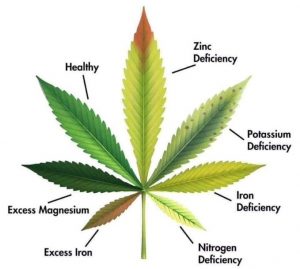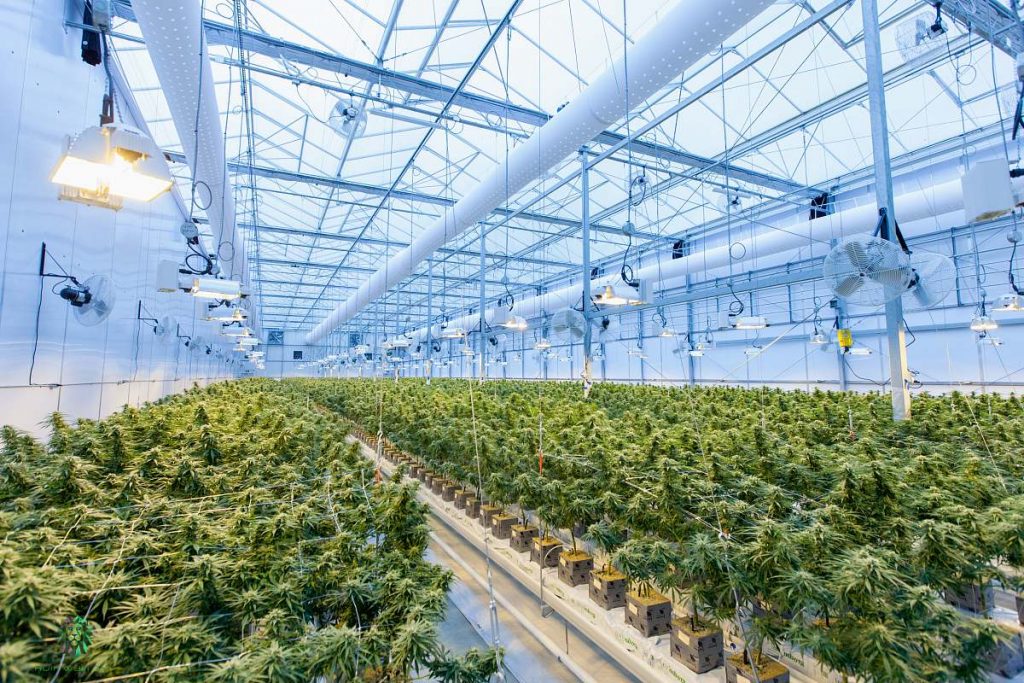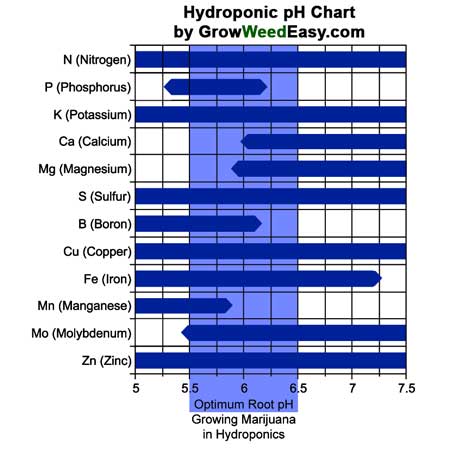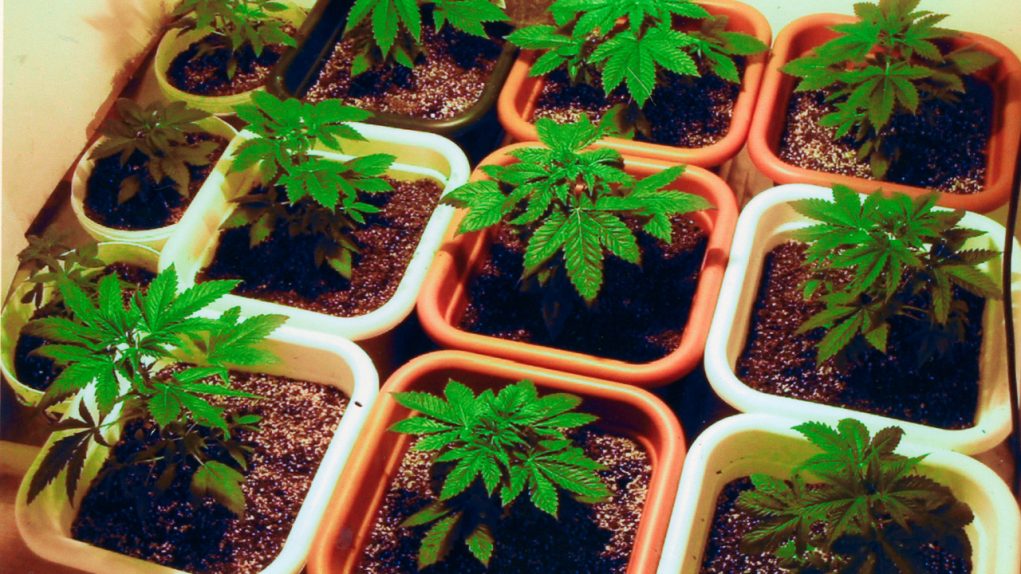Every weed grower wants his plant to be the best plant possible. You can achieve it only by working hard and dedicating yourself to each state of the growing process – from studying growing equipment guides and choosing the seeds to fertilize and harvest.
Moreover, good and experienced farmers can immediately recognize any problem that occurs, but others have to learn from experience. Knowing how to recognize the signs of various issues timely is essential for growing cannabis.
Here, you will learn about preventing cannabis nutrient deficiencies and what to do if they occur. You will get information about identifying which nutrient your plant is missing, its symptoms, the correct pH for the marijuana plant, and many more. Read on!


Marijuana Nutrient Deficiencies: What Are They?
Weed leaves are healthy when they are green and smooth. When leaves are lacking some nutrients, it will be noticeable by just looking at them. To understand what’s going on, you need to learn about marijuana nutrient deficiencies and understand that many factors can cause them.
You already know that plants require carbon dioxide, water, and light for their growth. Yet, they also need other elements such as nitrogen, potassium, phosphorus, and micronutrients such as boron, zinc, iron, copper, magnesium, etc.
A variety of elements can be missing from the soil in which your plant grows. It can be caused by several reasons ranging from improper pH levels to the presence of harmful toxins in the soil. If a marijuana plant gets sick, the leaves start to wither and turn pale.

Here are some common symptoms of cannabis nutrient deficiencies
-
- Yellow leaves. If potassium is missing, you will see leaves losing their chlorophyll and turning pale yellow or completely white.
-
- Pale leaves. This sign is typical for nitrogen deficiency, making leaves pale and brittle.
-
- Reddish or purple leaf edges. Iron deficiency, just like potassium, causes reddening of leaves’ edges or tips.
-
- Mottling. This issue occurs when a plant does not have enough phosphorus. The affected parts of the leaves lose their green color, appear splotchy and discolored.
-
- Stem damage. Phosphorus deficiency makes your stems fragile and easy to break.
-
- Stunted growth. If your marijuana plant has nitrogen deficiency, it will stop growing at all or even start to wither.
-
- Dark spots on leaves. This symptom is typical for excess salts in the soil. It usually occurs in hydroponic systems when the solution is too concentrated. However, it can happen in the soil if there is too much fertilizer applied to it or if the the soil itself contains excessive amounts of salt that were not taken out during the extraction process.
-
- Excessively soft or mushy stems. The easiest way to spot potassium deficiency is by pressing the stem between your thumb and index finger while the plant is still alive. If it feels soft and mushy, and you can see white streaks in the stem, your plant lacks potassium. It should feel firm to touch without any white streaks present on the stem.
What Are Their Causes?
The easiest way to prevent cannabis nutrient deficiencies is making sure that there is no shortage of any elements that a marijuana plant needs for its growth and finding what causes it in the first place. Many different factors cause nutrient deficiency:

Over or Underwatering
When it comes to marijuana nutrient deficiencies, the most common cause of this issue is watering the plants improperly. Your plants need just the right amount of water to thrive. If there is too little water, all its nutrients will be leached out of the plant. The same thing happens if you overdo it with watering as well. You should always keep an eye on your plants’ water level, using a special tool for measuring it.
You can also quickly check how much water your plants need by taking a look at their soil. If it looks dry, you should water your plants. If it is still damp, hold off for a while as it may lead to overwatering. Do not forget that your plants need water every week to stay healthy, no matter whether they are hydroponic or soil-grown. However, the frequency of watering may depend on the medium used by you.

pH Issues in Hydroponics Systems
pH is one of the most critical elements when growing cannabis. A good pH value allows your plant to absorb all the essential elements it needs for growth, including iron and other micronutrients.
In hydroponic systems, it is quite easy to get the desired pH value. You should always ensure that your system has a stable pH value in the 5.8-6.2 range. Keep in mind that you should check pH level regularly as it may change depending on several different factors, such as humidity levels and the type of nutrients used.

Toxic Substances in Soil
Some substances may accumulate in your growing medium over time, and it is crucial to ensure that there are no toxic substances present in your growing medium or soil. If you see any signs of toxicity in your plants (discolored leaf edges, dark spots on leaves), you should take action immediately and wash out your growing medium or add some fertilizer that will balance out the toxicity level.
How to Prevent Them or Deal With Them?
Now you know how to recognize marijuana nutrient deficiencies in your plants and what they look like. However, knowing how to prevent them would be even better.
To do so, you need to make sure that every element essential for plant growth is present in your growing medium or soil. If you use a hydroponics system, make sure to measure both pH level and TDS level with reliable water testing tools. If you notice any changes in these values over time, do not hesitate to make necessary changes and solve the issue quickly.
When you notice any cannabis nutrient deficiency symptoms on your plants, here are a few things that you can do to fix this issue:

Ensure That Your Plants Get Enough Light
If your plant stops growing because of a lack of light, it is vital to fix this issue quickly. Make sure to give it sufficient light to help your plant grow and develop strong roots that will allow it to absorb enough nutrients itself. Your cannabis plant will start to grow again when you provide enough light to it.
Add Fertilizer
If you did not use any fertilizer before the issue occurred, clean your growing medium with clean water first! Then add fertilizer with a balanced NPK ratio (nitrogen-phosphorus-potassium) and micronutrients such as iron and zinc. Make sure that your fertilizer does not contain any toxic substances or excessive amounts of salt.
It will take 3-4 days for the fertilizer to take effect, but after that period, your plant will start growing again. You should be careful and use small amounts and check how it goes. Be careful not to overfeed your plant with fertilizers, especially if you use a hydroponics system, as it may lead to salt buildup.
Water Your Plant
When you notice that your plant lacks water, it is essential to fix this issue as soon as possible. If your plant does not get enough water, it can quickly become dehydrated. It is crucial to keep the growing medium moist at all times. Make sure to use clean water, but avoid overwatering as it may lead to root rot.
Wash Your Growing Medium
If you notice any salt buildup in your growing medium, you can wash it out with clean water. It is essential to do so carefully as not to damage your plants. Just make sure that water does not reach the base of your plant.
Spray your plant with water, but do not flood it. Make sure that water does not reach the base of your plant – just spray the top of your plant and let the water slowly work its way down. You can also add more fertilizer to balance out toxicity levels in your medium.
In Conclusion
Nutrient deficiencies in cannabis plants can affect their growth and show symptoms like changes in plant leaves, mottling, and worsening the condition of stems. To avoid this issue, it is crucial to be aware of all the possible factors that may cause nutrient deficiency and timely address its symptoms.
Taking care of your growing medium’s pH and toxicity levels is one of the most crucial steps to prevent or deal with the lack of essential nutrients your plant needs to grow. Keep an eye on your cannabis plants and enjoy the growing process!
This guest post was provided by author Ciara Walsh. Readers, you may share your cannabis cultivation experiences and tips in our forum.













